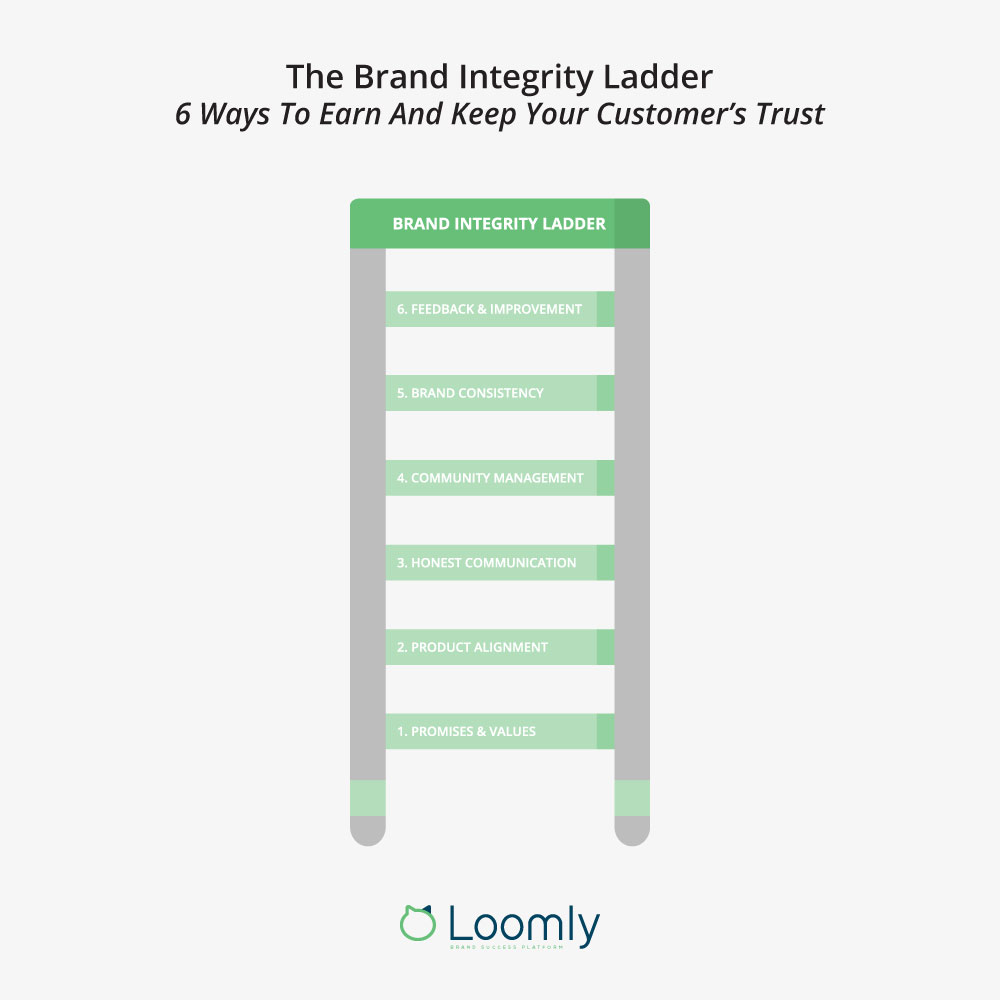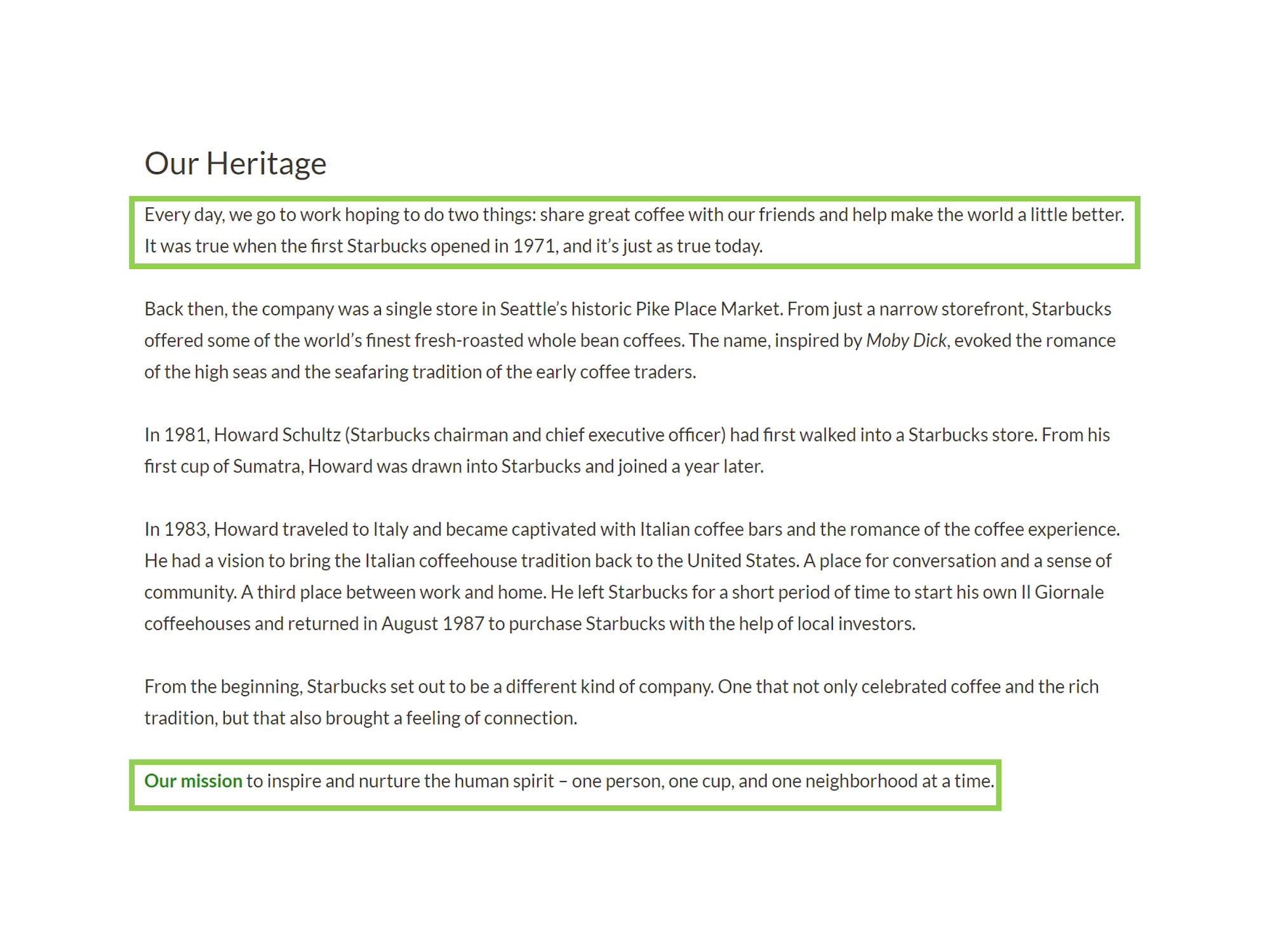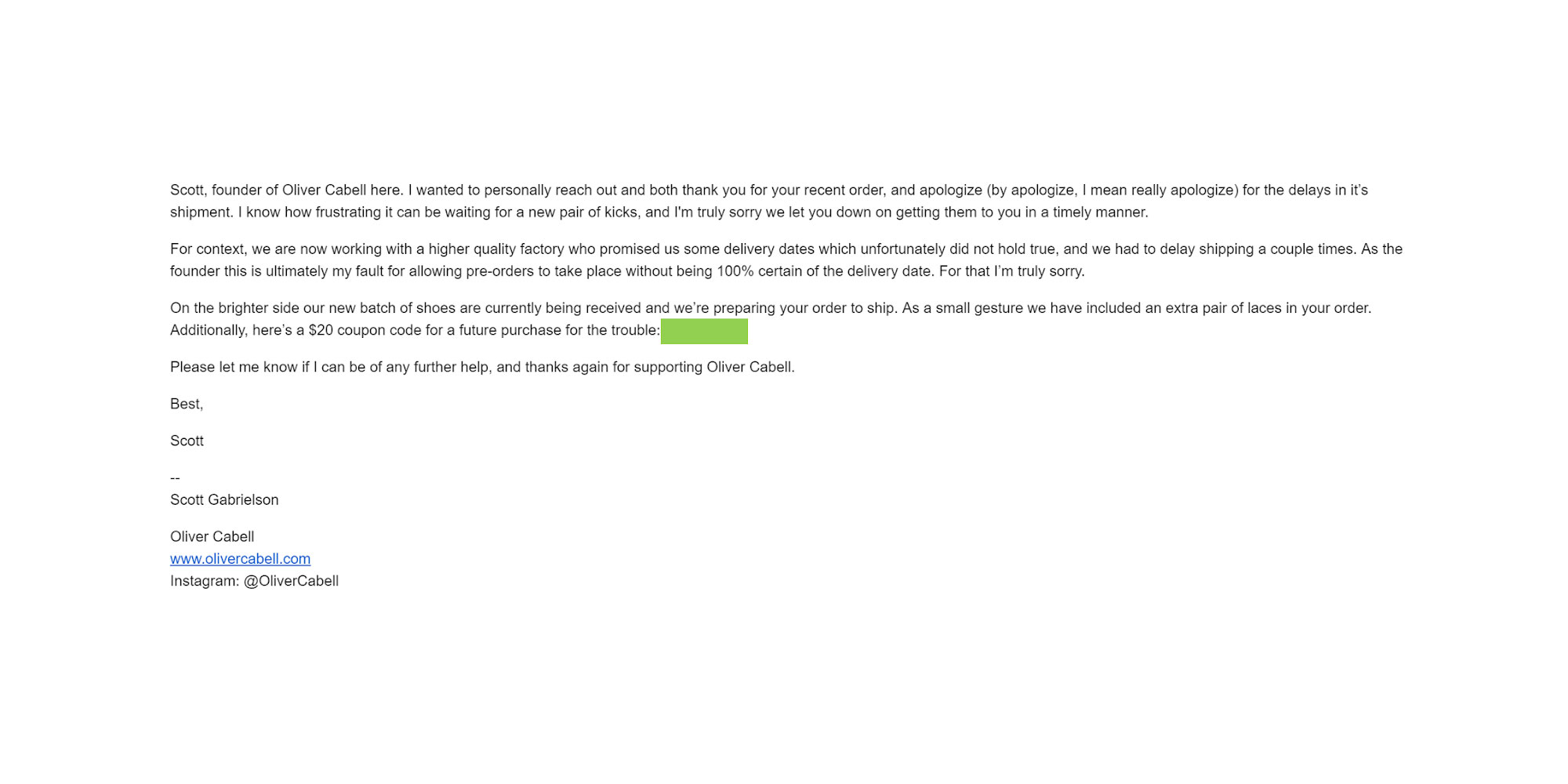Do you know what influences a brand’s success more than money or growth?
Trust.
Consumer trust is what makes everything else possible.
It is worth more than gold in today’s online business world, especially when so many brands are competing for attention.
But how do you earn and keep your customer’s trust?
Well, the answer to that is simple:
Brand integrity.
By being the brand that communicates honestly, transparently, and consistently delivers on its promises, you can become your industry’s trusted choice.
In this guide we are going to show you:
- What brand integrity is (and why your customers need it)
- Examples of how brand integrity can make (or break) your business
- The Brand Integrity Ladder you can use to earn and keep trust
Let’s get started, shall we?
What Is Brand Integrity (And Why Do Your Customers Need It)?
Brand integrity is a lens customers use to view your brand.
It is influenced by the image you cultivate, the values you set, and the product you sell; all of which come together to make a definite promise to the customers.
Customers expect you to maintain the integrity of that promise by taking authentic and transparent actions.
For example:
Volvo has built a brand around safety.
They aim to keep their brand integrity by pioneering safety initiatives all over the world. In the last few years they have:
- Started their #StandForSafety campaign
- Committed to limit their cars to 112 miles per hour by 2020
- Launched the E.V.A initiative to make cars safer for women
They have also set some lofty — and public — goal for their cars:

These strategies help to reinforce the customer’s belief in their promise and present them as a brand they can trust — which is a pretty big deal.
Research from MarketinCharts.com shows that 68% of US adults need a high level of trust in a brand before they make a purchase; especially one that requires a significant investment.
Acting against your brand integrity – meaning, you break the promise you made – can have a lot of negative repercussions.
When it comes to the brands they distrust:
- 48% of people refuse to buy their products or services
- 42% openly criticized the company
- 26% spread negative word of mouth
These are lessons that Wells Fargo found out the hard way.
What Happens When You Break Your Promise
Wells Fargo built their brand around stability.
They were one of the low-risk banks through the financial crisis, and they promised their customers they were safe, secure, and ethical.
Here is one of their adverts from 2008:

Wells Fargo shattered this image — and their brand integrity — when they found themselves in the middle of a 2016 scandal.
They were found to have opened 3.5 million fraudulent accounts and burdened their customers with fees and products they did not ask for.
This led to nearly 30% of their customers — a worth of 93 billion dollars — threatening to leave the bank, citing “dishonest, unethical or illegal practices” as the reason.
If we leave the inner-workings of the scandal to one side, we can see this is a direct breach of their brand integrity; it took them years to build that trust, but only a matter of days to lose it.
Chances are you are not going to find yourself in a brand integrity scandal the size of Wells Fargo’s, but going against your integrity can impact your brand even on a small scale.
Let’s look, then, at how you can best earn and keep your customer’s trust.
The Brand Integrity Ladder : 6 Ways To Earn And Keep Your Customer’s Trust
In this section, we are going to look at what we call the Brand Integrity Ladder:

There are six “rungs” on the ladder:
- Promises and values
- Product alignment
- Honest communication
- Community management
- Brand consistency
- Feedback and improvement
Each of these builds on the last to create a second of trust, authenticity, and consistency around your brand.
Here is how each of them works:
Rung 01: Get Clear On Your Brand’s Promises And Values
The first rung on the ladder looks at two foundational aspects:
- Promises: the promises your brand makes
- Values: the values you are expected to uphold
It is critical to understand precisely what each of these is. Why?
Because these are the factors your customers will benchmark your brand’s integrity against. So, take some time to get familiar with them.
Finding them is simple:
You either need to look at the explicit statements made to your audience in places like your company website, as Starbucks does here:

Otherwise, you will need to look at your current brand messaging and look for the core promise that lies beneath it.
Once you have this in place, making decisions that maintain your brand integrity becomes much more straightforward. Which, brings us squarely to rung number two:
Rung 02: Align Your Products With Your Promise
The second rung requires you to take a look at your products — both current and future — and assess whether they are in-line with your promises and values.
The question you are seeking to answer is:
Do your products (or services, etc.) support the message you are promoting to your audience?
The better these two line up, the more integrity (and trust) your brand will have.
Let’s take a look at a brand who does this well, like Sonos.
They make the simple brand promise of, “reinventing home audio for today and tomorrow”. They do this through easy-to-use, wireless technology.

This requires their products to focus on improving a customer’s home audio experience. If it does no, then it goes against their brand integrity.
For example:
- If they were to release a waterproof speaker for the garden, that would be in-line with the brand integrity
- If they were to release a range of in-car speakers, this could be seen as not in-line with their brand integrity
The degree of this will change depending on the brand and the message.
Bose, one of Sonos’s competitors, focus on “better sound through research” and have a much wider target audience for their speakers than people looking to invest in home audio systems.
The key here is to understand the nuances in your promises and values and use them to bring your products in-line for a higher level of brand integrity.
Rung 03: Communicate Honestly And Authentically About Your Products
Rung number three focuses on how you talk about your products.
It is important that you do not over-sensationalize your products in your corporate communications. After all, we all saw what happened to Fyre festival, right?
Surveys show that 56% of consumers feel that transparent communication about products inspires more trust in a brand.
73% of those customers are willing to pay more to have total transparency, and 39% would switch brands if they feel a competitor is more transparent.
The key to this step is to set honest, realistic, expectations for your products; to talk openly about what they can (and can not) do.
And, when you make a mistake, it is always good to own up to it as Oliver Cabell has done here:

Now:
This does not mean you can not focus on the benefits of a product or use copywriting to gain a competitive advantage. Instead, just focus on the real benefits.
Simply put, if you are selling a Skoda do not try and pass it off as a Ferrari!
Rung 04: Spend Time On Your Existing Community
Rung number four focuses on your existing community.
One mistakes brands often make is that they focus solely on earning the trust of new customers, and not on keeping the trust of people they have already converted.
But the truth is…
When a customer feels forgotten about, or as if they are getting a worse deal than your new customers, your brand integrity takes a big hit.
After all, nobody wants to feel that they are less important once they have made a purchase from you. Yet, this is how many brands make their existing customers feel.
Community management can help with this and help you to keep the trust you worked so hard to earn.
Engaging your existing customers through:
- Corporate communications
- Benefits and loyalty schemes
- Experiential marketing
- Thank you notes
Can have a really positive impact on your brand integrity.
Better still, it can improve your marketing and attract new customers through word-of-mouth and brand advocacy.
Rung 05: Be Consistent At All Touchpoints
Rung number five focuses on consistency.
Brand consistency is the act of delivering the same brand message across all of your touchpoints; from social media through to the point of service.
Research has shown that brand consistency is the most important when choosing a brand to buy from and directly influences whether a brand becomes a trusted choice.
From a consumer perspective, this is for two good reasons:
- Consistency is personal and influenced by their brand interactions
- Reinforcing a message builds belief that a brand will deliver on its promise
The more consistency you can create across all of your touchpoints, the more trustworthy your brand will be perceived to be.
If you would like to learn more about brand consistency, please take a look at our brand consistency guide.
Rung 06: Continuously Gather Feedback and Improve
Rung number six focuses on continuous improvement.
It is paramount that brands continuously gather feedback, analyze their work, and make adjustments to better suit the needs of their customers.
Brand integrity can be measured using brand intelligence approaches like:
- Net Promoter Score
- Customer feedback surveys
- Social listening
These can help you to perform customer sentiment analysis and assess how you are performing. Most importantly, you are looking to see if you are maintaining your integrity.

Manage all your social media accounts in one place.
Craft, schedule, & auto-post content to all your social channels, then track analytics and manage interactions from a single, easy-to-use dashboard.
Wrapping This Up
Brand integrity is how your customers view your brand based on your messaging, products, and values. It is (subconsciously) benchmarked against your brand promise.
Having brand integrity means acting in a way that delivers on your brand’s promise and shows a high level of authenticity and transparency.
There are six “rungs” on the Brand Integrity Ladder you need to use to cultivate strong brand integrity:
- Promises and values
- Product alignment
- Honest communication
- Community management
- Brand consistency
- Feedback and improvement
If you can use each of these, you will be well on your way to brand success.
And if you want a tool that helps make honest and transparent corporate communication much easier, Loomly is always here for you: start your 15-day free trial now.



